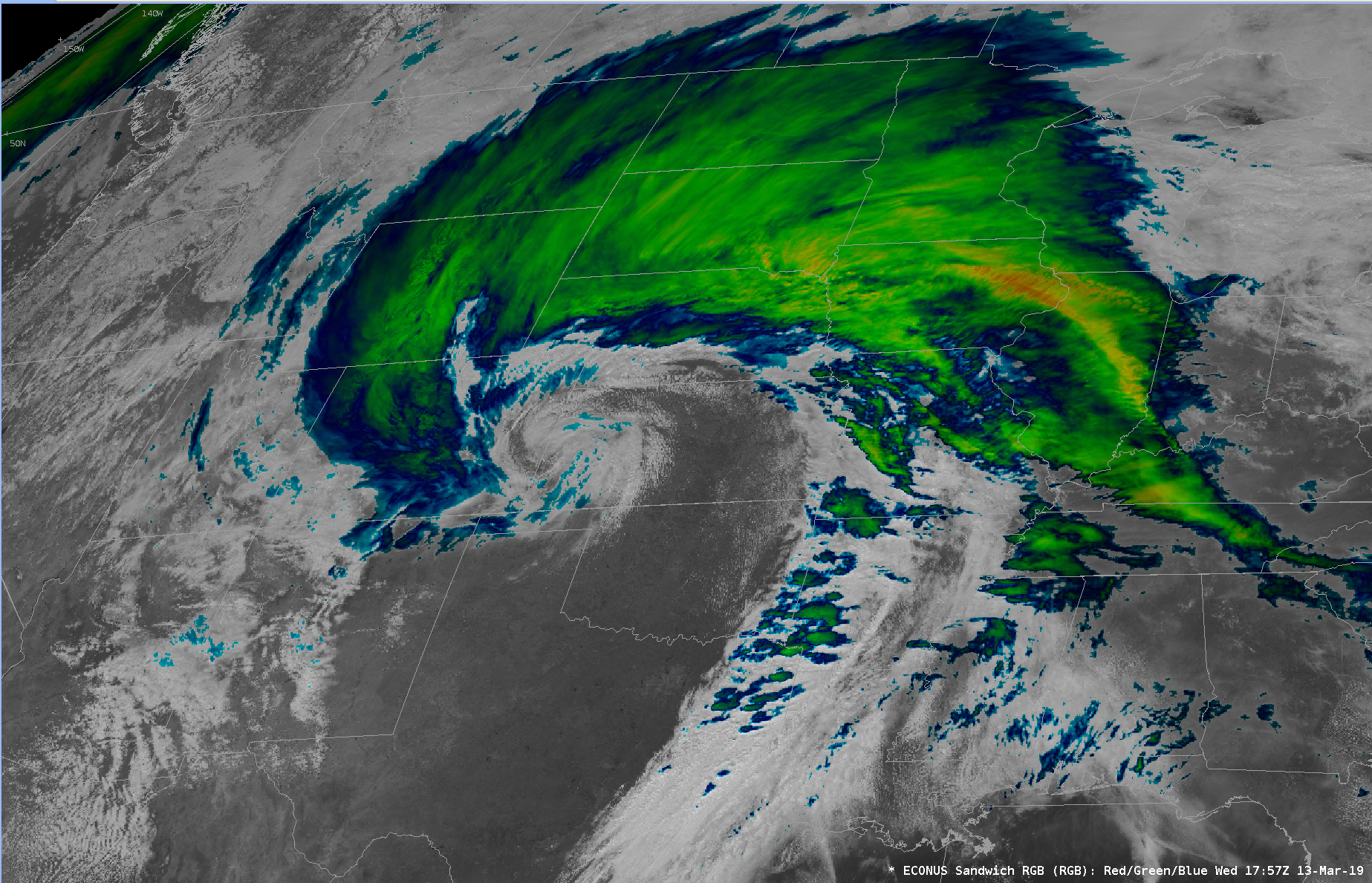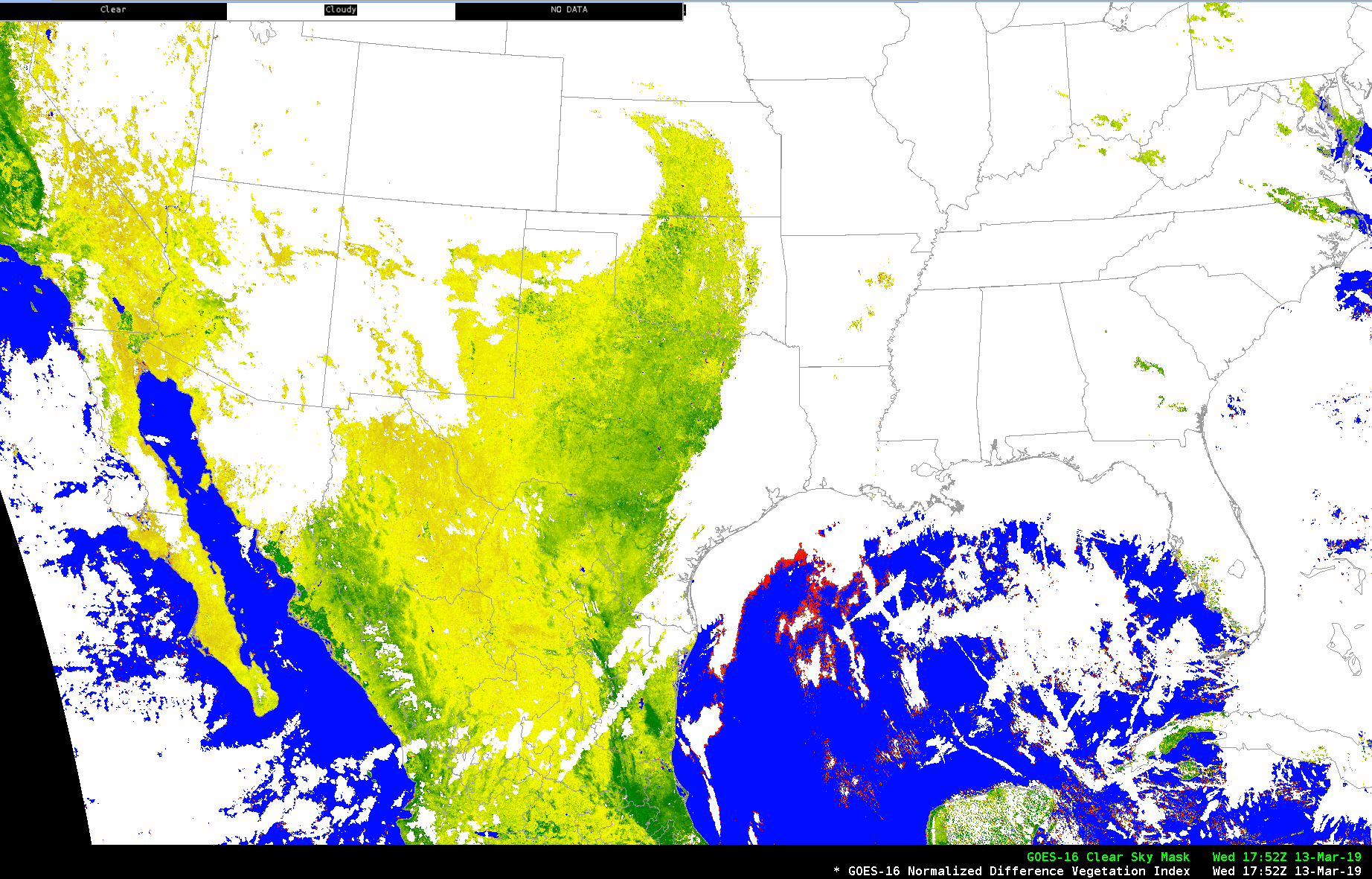v21 & Earlier - Total Operational Weather Readiness - Satellites (TOWR-S)
TOWR-S RPM v21 & Earlier
March 2019: AWIPS RPM Release
TOWR-S Team | NWS Office of Observations | GOES-R Program
![]() 3 minute read
3 minute read
As of March 19, 2019, the TOWR-S AWIPS RPM (version 16.1) has been officially released and posted in the AWIPS repository.
Click the button below to access the RPM installation instructions.
If you have any questions about installation of the RPM, please contact the NCF. If you have any questions or feedback about the RPM contents, the fastest way to contact us is via NWS Chat, by joining the “towr-s” group.
RPM Highlights
The March 2019 RPM Release features several AWIPS additions and modifications, which include:
1. The Vis-IR Sandwich product derived parameter is now available, located in the “RGB Composites” menu.

Image taken on March 13, 2019 at 17:57z.
Techniques development meteorologist at Southern Region Headquarters, Chad Gravelle, describes the benefits of the Vis-IR Sandwich product, “The European Organization for the Exploitation of Meteorological Satellites (EUMETSAT) meteorologists developed sandwich products in the late 2000s to layer-blend two spectral bands into one. The Vis-IR Sandwich product was created to quickly compare the appearance of storm-top features in the visible and IR brightness temperature spectral bands at the same time. The product can be used when analyzing overshooting tops, above anvil cirrus plumes, or convective cold rings. Similar to Setvák et al. (2012) where each pixel with an IR brightness temperature < -20 C is linearly scaled based on the amount of visible reflectance, this product allows for two spectral bands to be quickly layered using the AWIPS image combination feature. The EUMETSAT method used here conserves the original quality of the visible and IR imagery.”
Special thanks to Matt Foster, science and operations officer at the Operations Proving Ground, for coding this RGB for AWIPS.
2. The Normalized Differential Vegetation Index (NDVI) channel difference is now available and is located in the “Channel Differences” menu.

Image taken on March 13, 2019 at 17:52z.
Science and Operations Officer at WFO Columbia, South Carolina, Frank Alsheimer, explains how the NDVI is used and the benefits it brings to viewing specific products, “The NDVI is used to track the "green up" process in the Spring. The NDVI is used by offices and their forest service partners to track the duration and ending of the grassland fire threat. It is also used as a reference for some products issued by WFOs, such as the South Dakota Grassland Fire Danger product. The GOES temporal frequency allows users to view the product for areas with clear skies (during the day only, as it uses the 0.64 and 0.86 um bands), rather than waiting for a polar pass. Once the areas of color yellow and orange turn to green, there is usually enough moisture to prevent most grassland fires. It may also be useful to overlay the GOES-E Cloud Mask product to better see the cloud-free areas.”
3. The Sea Surface Temperature and Volcanic Ash derived products from GOES-E (and eventually GOES-W) properly distinguish between the two satellites in the AWIPS product legend when displaying.
4. The satellite submenu labelled “GOES-17” has been renamed “GOES-West”.
5. In the AWIPS product legend, sector labels have been added to display a product for all GOES satellite derived products and RGB composites. For example, the text “ECONUS” (East CONUS) or “EFD” (East Full Disk) are now displayed.
6. The JASON Wave Height menu button has been moved from under the “Obs” menu to the “Satellite” menu.
As always, the March 2019 AWIPS RPM Release includes items from previous RPM improvements, such as increased AWIPS looping frame count, Full Disk map options and GOES Geostationary Lightning Mapper (GLM) configurations.
For the sake of continuity, each office is highly encouraged to install this RPM. Eventually, these improvements will be in AWIPS baseline releases; however, it will take many months to do so.
Questions?
Again, if you have any issues installing the RPM, please contact the NCF. If you have any questions or feedback about the RPM contents, the fastest way to contact us is through NWS Chat by joining the “towr-s” group.




